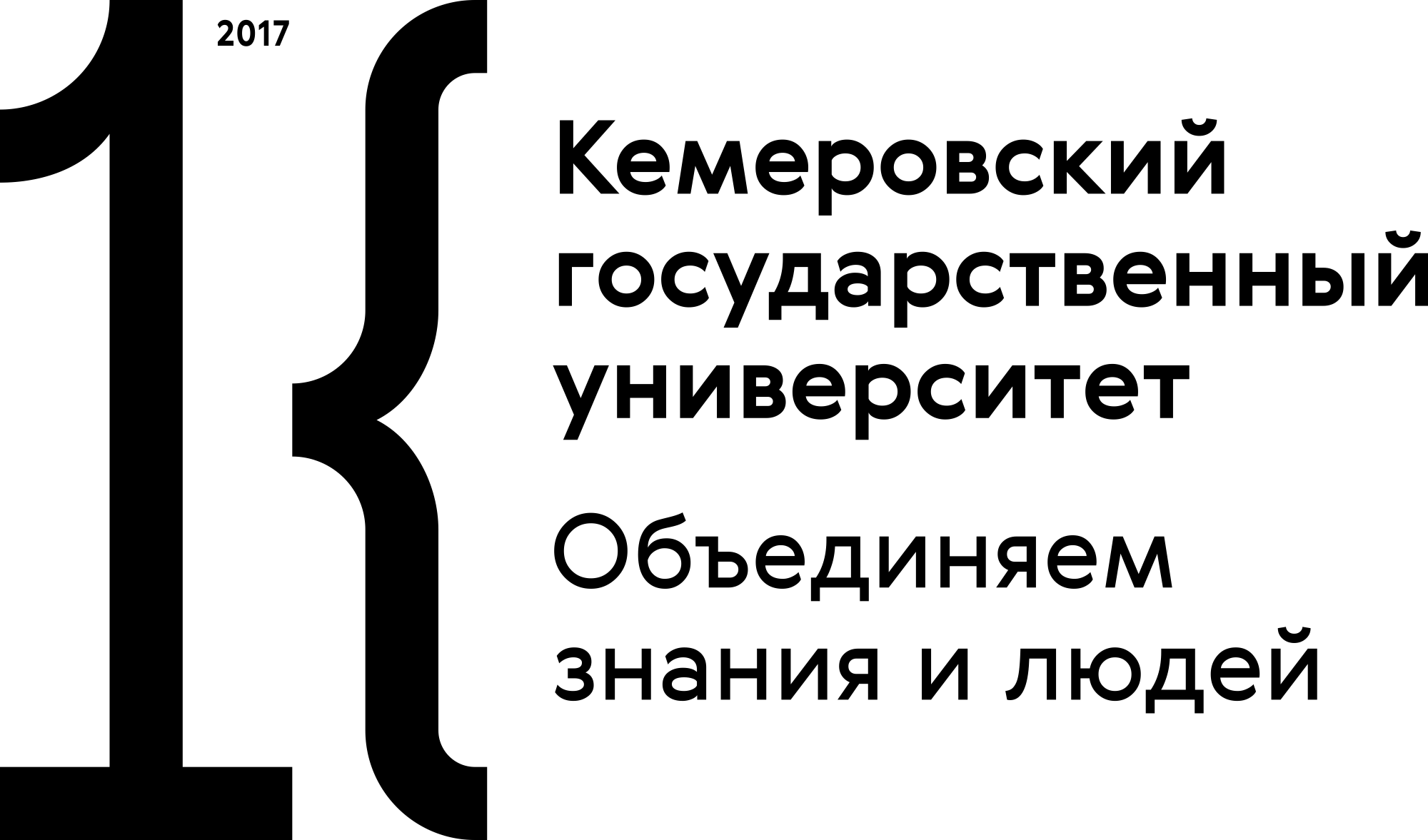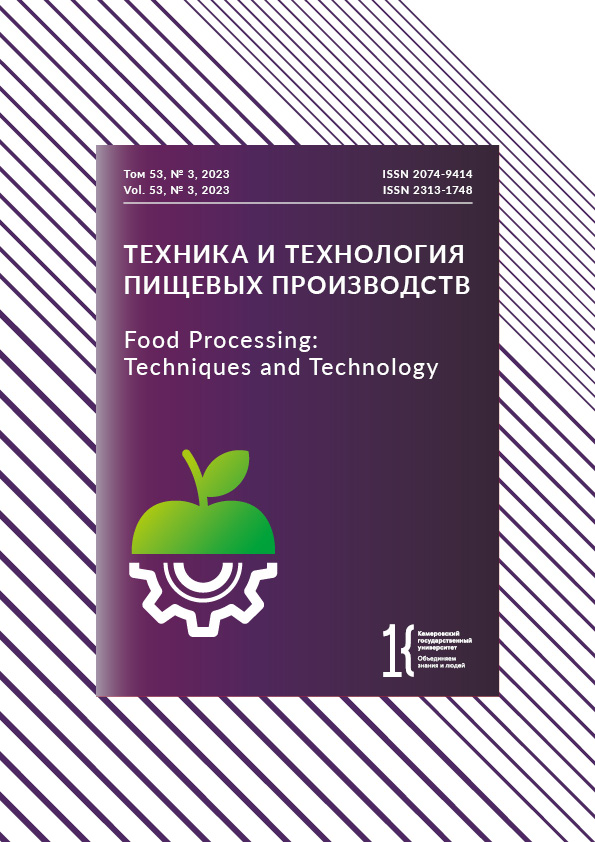Калининград, Калининградская область, Россия
Калининград, Россия
Калининград, Калининградская область, Россия
Калининград, Калининградская область, Россия
Калининград, Калининградская область, Россия
Калининград, Россия
Цианобактерии являются перспективными продуцентами экзополисахаридов, обладающих высокой биологической активностью. Актуальным является вопрос выделения и идентификации экзополисахаридов из штамма цианобактерий Cyanobacterium sp. рода Cyanobacterium семейства Cyanobacteriaceae fam. nov. Цель исследования заключалась в изучении экзополисахаридов штамма цианобактерий Cyanobacterium sp. B-1200, в зависимости от физико-химических условий культивирования и состава культуральной среды, и подборе оптимальных параметров экстракции и очистки экзополисахаридов из культуральной среды. Штамм цианобактерии Cyanobacterium sp. B-1200 выращивали в условиях освещения 7500 ± 50 люкс (12 ч света/12 ч темноты). Сухую клеточную массу цианобактерий определяли методом гравиметрии, а также с использованием градуировочного графика зависимости количества биомассы от степени поглощения при длине волны 750 нм. Количество полисахаридов в культуральной жидкости оценивали антрон-сернокислым методом. Экстракцию полисахаридов осуществляли путем спиртового осаждения. Метод ультразвукового диспергирования применяли для деструкции клеточных стенок цианобактерий. В результате исследования подобрали оптимальные параметры экстракции и очистки экзополисахаридов. Удаление из культуральной среды гидрокарбоната натрия и увеличение его концентрации в среде на 300 % положительно влияло на выход полисахаридов. Оптимальным значением активной кислотности для синтеза полисахаридов являлось значение рН = 6. Оптимальная температура для накопления полисахаридов – 35 °С, хотя наибольшее количество биомассы отмечено при 25 °С. Интенсивное белое освещение способствовало наибольшему выходу экзополисахаридов в культуральную среду, красно-белое освещение вызывало изменение морфологии клеток цианобактерий. При проведении экстракции влияние оказывали концентрация, температура и природа экстрагента: наибольший выход экзополисахаридов наблюдался при использовании изопропанола, наименьший – при использовании бутанола. В результате подбора оптимальных режимов экстракции и очистки полисахаридов были сформулированы следующие рекомендации: для ультразвуковой обработки рекомендовано использовать мощность 20 Вт и время обработки 5 мин, для сублимационной – продолжительность 8 ч и температура –15 °С.
Cyanobacterium sp., экзополисахариды, спиртовая экстракция, условия культивирования, ультразвуковое диспергирование, культуральная жидкость, нейтральные сахара, уроновые кислоты
1. El-Ghonemy DH. Antioxidant and antimicrobial activities of exopolysaccharides produced by a novel Aspergillus sp. DHE6 under optimized submerged fermentation conditions. Biocatalysis and Agricultural Biotechnology. 2021;36. https://doi.org/10.1016/j.bcab.2021.102150
2. Ramos J, Villacrés NA, Cavalheiro ÉTG, Alarcón HA, Valderrama AC. Preparation of sodium alginate films incorporated with hydroalcoholic extract of Macrocystis pyrifera L. Foods and Raw Materials. 2023;11(1):64-71. https://doi.org/10.21603/2308-4057-2023-1-553
3. Moreira JB, Kuntzler SG, Bezerra PQM, Aguiar Cassuriaga AP, Zaparoli M, da Silva JLV, et al. Recent advances of microalgae exopolysaccharides for application as bioflocculants. Polysaccharides. 2022;3(1):264-276. https://doi.org/10.3390/polysaccharides3010015
4. Potnis AA, Raghavan PS, Rajaram H. Overview on cyanobacterial exopolysaccharides and biofilms: Role in bioremediation. Reviews in Environmental Science and Bio/Technology. 2021;20:781-794. https://doi.org/10.1007/s11157-021-09586-w
5. Zuniga EG, Boateng KKA, Bui NU, Kurnfuli S, Muthana SM, Risser DD. Identification of a hormogonium polysaccharide-specific gene set conserved in filamentous cyanobacteria. Molecular Microbiology. 2020;114(4):597-608. https://doi.org/10.1111/mmi.14566
6. de Philippis R, Vincenzini M. Exocellular polysaccharides from Cyanobacteria and their possible applications. FEMS Microbiology Reviews. 1998;22(3):151-175. https://doi.org/10.1111/j.1574-6976.1998.tb00365.x
7. Bhatnagar M, Bhatnagar A. Diversity of polysaccharides in cyanobacteria. In: Satyanarayana T, Johri BN, Das SK, editors. Microbial diversity in ecosystem sustainability and biotechnological applications. Volume 1. Microbial diversity in normal & extreme environments. Singapore: Springer; 2019. pp. 447-496. https://doi.org/10.1007/978-981-13-8315-1_15
8. Morone J, Alfeus A, Vasconcelos V, Martins R. Revealing the potential of cyanobacteria in cosmetics and cosmeceuticals - A new bioactive approach. Algal Research. 2019;41. https://doi.org/10.1016/j.algal.2019.101541
9. Tseng C-C, Yeh H-Y, Liao Z-H, Hung S-W, Chen B, Lee P-T, et al. An in vitro study shows the potential of Nostoc commune (Cyanobacteria) polysaccharides extract for wound-healing and anti-allergic use in the cosmetics industry. Journal of Functional Foods. 2021;87. https://doi.org/10.1016/j.jff.2021.104754
10. Okeyoshi K, Okajima MK, Kaneko T. The cyanobacterial polysaccharide sacran: Characteristics, structures, and preparation of LC gels. Polymer Journal. 2021;53:81-91. https://doi.org/10.1038/s41428-020-00426-2
11. Borah D, Gopalakrishnan S, Nooruddin T. Carbohydrate biolubricants from algae and cyanobacteria. Journal of Polymers and the Environment. 2021;29:3444-3458. https://doi.org/10.1007/s10924-021-02144-z
12. Kumar D, Kvíderová J, Kaštánek P, Lukavský J. The green alga Dictyosphaerium chlorelloides biomass and polysaccharides production determined using cultivation in crossed gradients of temperature and light. Engineering in Life Sciences. 2017;17:1030-1038. https://doi.org/10.1002/elsc.201700014
13. Moreno J, Angeles Vargas M, Olivares H, Rivas J, Guerrero MG. Exopolysaccharide production by the cyanobacterium Anabaena sp. ATCC 33047 in batch and continuous culture. Journal of Biotechnology. 1998;60(3):175-182. https://doi.org/10.1016/S0168-1656(98)00003-0
14. Singh SP, Singh P. Effect of temperature and light on the growth of algae species: A review. Renewable and Sustainable Energy Reviews. 2015;50:431-444. https://doi.org/10.1016/j.rser.2015.05.024
15. Zhao T, Han X, Cao H. Effect of temperature on biological macromolecules of three microalgae and application of FT-IR for evaluating microalgal lipid characterization. ACS omega. 2020;5(51):33262-33268. https://doi.org/10.1021/acsomega.0c04961
16. Moreira JB, da Silva Vaz B, Cardias BB, Cruz CG, de Almeida ACA, Costa JAV, et al. Microalgae polysaccharides: An alternative source for food production and sustainable agriculture. Polysaccharides. 2022;3(2):441-457. https://doi.org/10.3390/polysaccharides3020027
17. Chen Z, Li T, Yang B, Jin X, Wu H, Wu J, et al. Isolation of a novel strain of Cyanobacterium sp. with good adaptation to extreme alkalinity and high polysaccharide yield. Journal of Oceanology and Limnology. 2021;39:1131-1142. https://doi.org/10.1007/s00343-020-0113-7
18. Komárek J, Kaštovský J, Mareš J, Johansen JR. Taxonomic classification of cyanoprokaryotes (cyanobacterial genera) 2014, using a polyphasic approach. Preslia. 2014;86:295-335.
19. Sarsekeyeva FK, Usserbaeva AA, Zayadan BK, Mironov KS, Sidorov RA, Kozlova AYu, et al. Isolation and characterization of a new cyanobacterial strain with a unique fatty acid composition. Advances in Microbiology. 2014;4(15):1033-1043. https://doi.org/10.4236/aim.2014.415114
20. Zarrouk, C. Contribution a l’etude d’une cyanobacterie: influence de divers facteurs physiques et chimiques sur la croissance et la photosynthese de Spirulina maxima (Setchell et Gardner) Geitler. France: University of Paris; 1966. (In French).
21. Griffiths MJ, Garcin C, van Hille RP, Harrison STL. Interference by pigment in the estimation of microalgal biomass concentration by optical density. Journal of Microbiological Methods. 2011;85(2):119-123. https://doi.org/10.1016/j.mimet.2011.02.005
22. Babich O, Budenkova E, Kashirskikh E, Dolganyuk V, Ivanova S, Prosekov A, et al. Study of the polysaccharide production by the microalga Vischeria punctate in relation to cultivation conditions. Life. 2022;12(10). https://doi.org/10.3390/life12101614
23. Gerde JA, Montalbo-Lomboy M, Yao L, Grewell D, Wang T. Evaluation of microalgae cell disruption by ultrasonic treatment. Bioresource Technology. 2012;125:175-181. https://doi.org/10.1016/j.biortech.2012.08.110
24. Yang D, Yang H. The temperature dependent extraction of polysaccharides from eucheuma and the rheological synergistic effect in their mixtures with kappa carrageenan. LWT. 2020;129. https://doi.org/10.1016/j.lwt.2020.109515
25. Chernyshev DN, Klochkova VS, Lelekov AS. Separation of the absorption spectrum of Porphyridium purpureum (Bory) Ross. in the red area. Issues of Modern Algology. 2022;28(1):25-34. (In Russ.). https://doi.org/10.33624/2311-0147-2022-1(28)-25-34
26. Zhang D-Y, Wan Y, Xu J-Y, Wu G-H, Li L, Yao X-H. Ultrasound extraction of polysaccharides from mulberry leaves and their effect on enhancing antioxidant activity. Carbohydrate Polymers. 2016;137:473-479. https://doi.org/10.1016/j.carbpol.2015.11.016
27. Ying Z, Han X, Li J. Ultrasound-assisted extraction of polysaccharides from mulberry leaves. Food Chemistry. 2011;127(3):1273-1279. https://doi.org/10.1016/j.foodchem.2011.01.083
28. Cui F-J, Qian L-S, Sun W-J, Zhang J-S, Yang Y, Li N, et al. Ultrasound-assisted extraction of polysaccharides from Volvariella volvacea: Process optimization and structural characterization. Molecules. 2018;23(7). https://doi.org/10.3390/molecules23071706
29. Mishra A, Jha B. Isolation and characterization of extracellular polymeric substances from micro-algae Dunaliella salina under salt stress. Bioresource Technology. 2009;100(13):3382-3386. https://doi.org/10.1016/j.biortech.2009.02.006
30. Markou G, Chatzipavlidis I, Georgakakis D. Carbohydrates production and bio-flocculation characteristics in cultures of Arthrospira (Spirulina) platensis: Improvements through phosphorus limitation process. BioEnergy Research. 2012;5:915-925. https://doi.org/10.1007/s12155-012-9205-3
31. Costa JAV, Lucas BF, Alvarenga AGP, Moreira JB, de Morais MG. Microalgae polysaccharides: an overview of production, characterization, and potential applications. Polysaccharides. 2021;2(4):759-772. https://doi.org/10.3390/polysaccharides2040046
32. Wu Y, Cui SW, Tang J, Gu X. Optimization of extraction process of crude polysaccharides from boat-fruited sterculia seeds by response surface methodology. Food Chemistry. 2007;105(4):1599-1605. https://doi.org/10.1016/j.foodchem.2007.03.066
33. Chaouch MA, Hafsa J, Rihouey C, Le Cerf D, Majdoub H. Effect of pH during extraction on the antioxidant and antiglycated activities of polysaccharides from Opuntia Ficus indica. Journal of Food Biochemistry. 2016;40(3):316-325. https://doi.org/10.1111/jfbc.12220
34. Lu J, You L, Lin Z, Zhao M, Cui C. The antioxidant capacity of polysaccharide from Laminaria japonica by citric acid extraction. International Journal of Food Science and Technology. 2013;48(7):1352-1358. https://doi.org/10.1111/ijfs.12072
35. Ye J, Hua X, Wang M, Zhang W, Yang R. Effect of extraction pH on the yield and physicochemical properties of polysaccharides extracts from peanut sediment of aqueous extraction process. LWT. 2019;106:137-144. https://doi.org/10.1016/j.lwt.2019.02.049
36. Taghavijeloudar M, Kebria DY, Yaqoubnejad P. Simultaneous harvesting and extracellular polymeric substances extrusion of microalgae using surfactant: Promoting surfactant-assisted flocculation through pH adjustment. Bioresource Technology. 2021;319. https://doi.org/10.1016/j.biortech.2020.124224
37. Xing P, Hahnke RL, Unfried F, Markert S, Huang S, Barbeyron T, et al. Niches of two polysaccharide-degrading Polaribacter isolates from the North Sea during a spring diatom bloom. ISME Journal. 2015;9:1410-1422. https://doi.org/10.1038/ismej.2014.225











